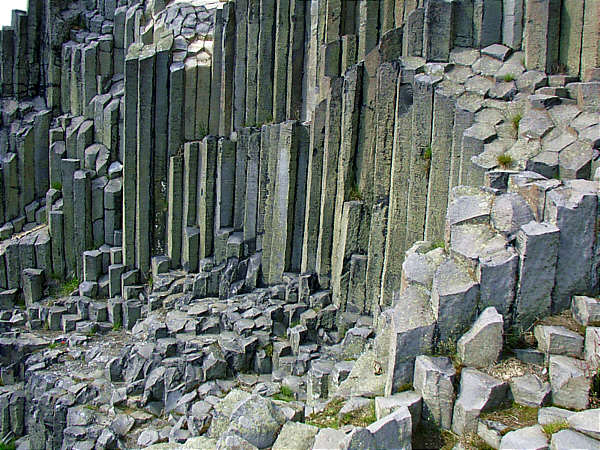
A team of international scientists believe they have discovered an innovative way to covert carbon dioxide (CO2) gas into a stone, thus promising a more secure technique of burying the heat trapping gas underground.
For the past two years, these scientists are busy carrying out the $10 million CarbFix experiment in Iceland. The experiment involves injecting a mixture of CO2 and water several hundred meters underground into volcanic basalt rock. This acidic mixture then dissolves magnesium and calcium ions in the rocks. The ions react with CO2 to create a stable, chalky solid limestone which serves as a natural prison for the gas. The results obtained so far suggest that basaltic rocks could work as an effective sinks for storing CO2 trapped from the atmosphere.
According to lead author Juerg Matter from Southampton University, UK, the experiment converted 95% of the injected CO2 (out of 220 tonnes) to limestone in less than two years.
“It was a huge surprise to all the scientists involved in the project, and we thought, ‘Wow! This is really fast’,” he recalled on the BBC’s Science in Action program.
Similar experiments done in labs had seen pure CO2 injected into sandstone, or deep, salty aquifers, and those scientists believed that such a technique would take thousands of years to convert CO2 into a solid matter.
Experts believe the unique Carbfix experiment promises a secured way of burying CO2 emission underground, and prevent earth from warming further. However, the only issue with using such a technique is the huge expenses involved with trapping and storing CO2 as a gas.
Another potential challenge in using the new technique is requirement of huge amounts of water: 25 tonnes for each tonne of CO2 buried. Matter suggests to use seawater, which would be available in large amounts at coastal sites.
“We need to deal with rising carbon emissions and this is the ultimate permanent storage – turn them back to stone,” said Matter.
“The engineering and technology of CCS (Carbon Capture and Storage) is ready to be deployed. So why do we not see hundreds of these projects? There is no incentive to do it,” he added.
The Iceland project has now fixed a new target of burying 10,000 tonnes of CO2 a year, and also bury hydrogen sulfide which can also be converted into minerals. Researchers from the Columbia University are focusing on another rock type, found in Oman, to see whether they can use this rock to convert CO2 into rock.
The detailed findings of the study have been published in Science magazine.



You must be logged in to post a comment.